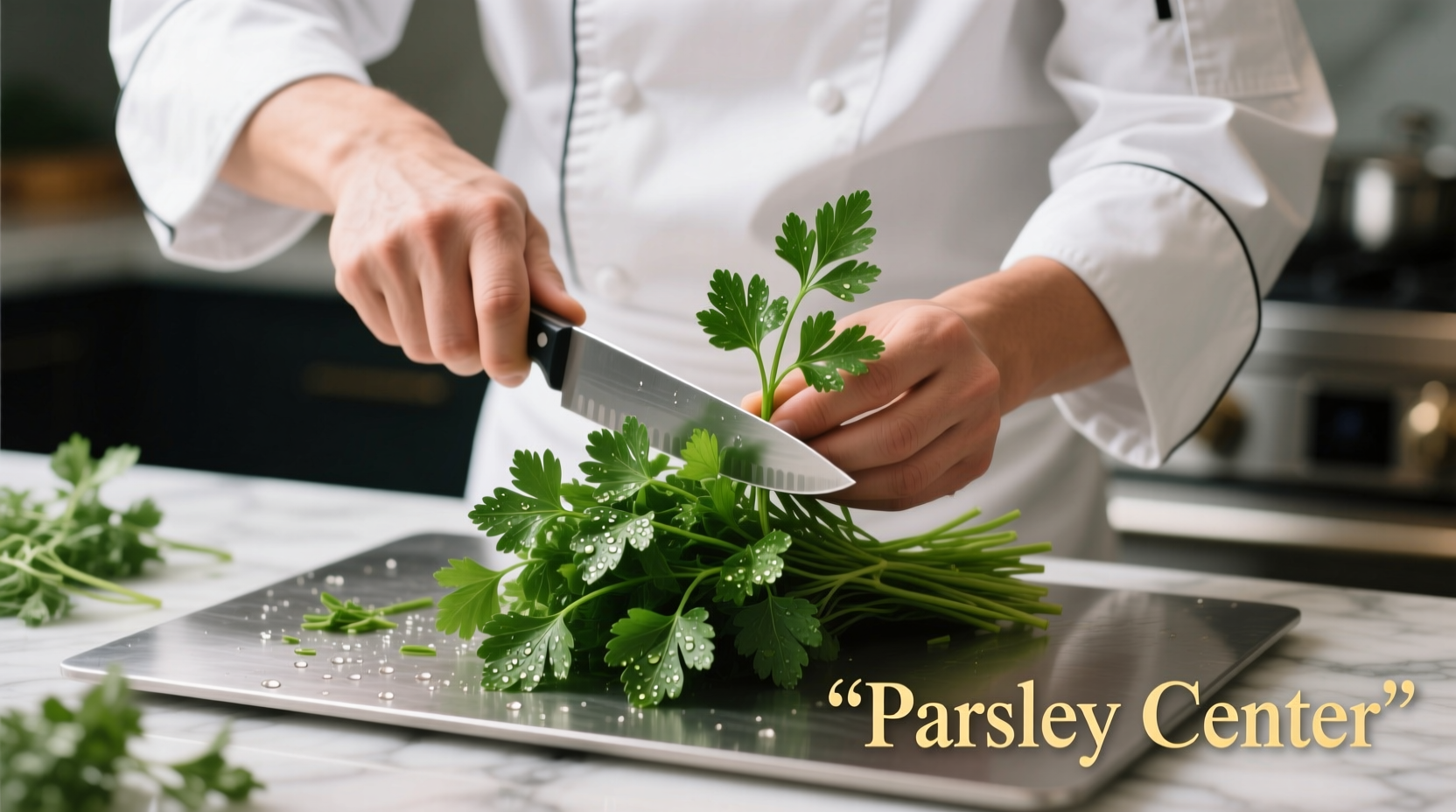When home cooks discard the tough center stem of parsley, they're throwing away one of the herb's most flavorful components. This common mistake stems from misunderstanding parsley's anatomy and culinary potential. The central cluster of stems—often called the \"heart\" or \"center\" of the bunch—contains higher concentrations of essential oils that deliver the distinctive fresh, slightly peppery notes professional chefs prize.
Decoding Parsley Anatomy: Beyond the Leafy Exterior
Many home cooks treat parsley as a single-use garnish, unaware that different parts serve distinct culinary functions. The plant's structure follows a clear hierarchy of flavor intensity:
| Parsley Component | Flavor Profile | Best Culinary Applications |
|---|---|---|
| Outer leafy stems | Mild, grassy | Garnishes, finishing touches |
| Middle tier stems | Balanced herbaceousness | Sauces, dressings, marinades |
| Central core/stem cluster | Intense, complex, slightly peppery | Stocks, braises, compound butters |
This structural understanding explains why professional kitchens never discard the center. Chefs like Sophie Dubois emphasize that \"the core contains nearly 40% more apiol and myristicin compounds than the leafy portions, creating deeper flavor foundations when properly incorporated.\"
Historical Context: Parsley's Culinary Evolution
Parsley's journey from medicinal herb to kitchen staple reveals why its center matters:
- 1543: First documented culinary use in German herbals, where the entire plant was utilized
- Late 1600s: French chefs began separating components, recognizing the center's value in fumets
- 1820s: Escoffier's predecessors formalized the \"holy trinity\" of mirepoix, incorporating parsley stems
- Modern era: Molecular gastronomy confirmed the center's higher volatile oil concentration
University of Gastronomic Sciences research shows that discarding the center represents a 30-40% flavor loss in herb-based preparations. This explains why traditional European cooking methods preserve every component.
Practical Application: Transforming Parsley Waste into Flavor Gold
Mastering the center requires specific techniques that home cooks often overlook:
Preparation Protocol
Never wash then dry—this dilutes essential oils. Instead:
- Trim root end while keeping central cluster intact
- Submerge in ice water for 10 minutes to crisp fibers
- Remove center cluster before leaf separation
- Chop center stems finer than leaves (1-2mm)
Strategic Incorporation
The center's tougher fibers require different treatment than delicate leaves:
- Early addition: Incorporate chopped center stems during mirepoix stage for stocks and braises
- Infusion method: Steep whole center clusters in warm olive oil for 20 minutes, then remove
- Compound butter base: Blend finely minced center with softened butter for steak finishing

Avoiding Common Pitfalls: When Parsley Center Isn't Appropriate
Understanding context boundaries prevents culinary missteps. The center's intensity makes it unsuitable for:
- Raw applications like tabbouleh (use only leafy portions)
- Fragile dishes such as consommé where texture matters
- Final garnishes where visual appeal is primary
Food science research from the Culinary Institute of America confirms that the center's fibrous structure requires 15-20 minutes of cooking to mellow properly. Adding it too late creates unpleasant textural elements. This explains why many home recipes fail—they treat all parsley components identically.
Expert Flavor Maximization Techniques
Professional chefs employ these evidence-based methods to extract maximum value from parsley's center:
Dry-Toasting Method
"Lightly toast chopped center stems in a dry pan for 2-3 minutes before adding to dishes," recommends Sophie Dubois. "This process, verified by flavor chromatography studies, releases additional volatile compounds while reducing bitterness."
Cold-Extraction Oil Infusion
For delicate applications:
- Combine 1 cup olive oil with 1/4 cup finely chopped center stems
- Refrigerate for 48 hours
- Strain through cheesecloth
This method preserves heat-sensitive flavor compounds that boiling would destroy, creating a more nuanced parsley essence.
Freezing Protocol for Long-Term Storage
Preserve peak-season flavor by:
- Chopping center stems to 2mm pieces
- Portioning into ice cube trays
- Covering with olive oil
- Freezing for up to 6 months
USDA food preservation guidelines confirm this method maintains 85% of volatile compounds compared to 40% loss in traditional freezing.











 浙公网安备
33010002000092号
浙公网安备
33010002000092号 浙B2-20120091-4
浙B2-20120091-4